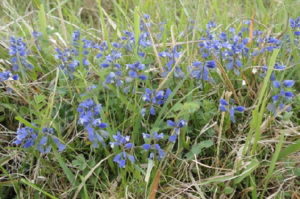County Recorders
North Worcestershire Flora Group (NWFG)
The aims of the NWFG are:
- To promote and encourage the study of wild plants in Worcestershire.
- To collect, collate and submit plant records to the BSBI and NBN Atlas.
- To hold meetings at least once a month, normally on the 3rd Saturday of each month.
Meetings scheduled for 2025:
|
Month |
Meeting & Location |
Main Contacts |
|
8th February |
‘Endangered Species’ Online talk from Dominic Price of the Species Recovery Trust. Online Q&A session via Zoom |
Cesca Beamish & Marian Davidson |
|
22nd February |
Vegetative Grasses using Poland Indoor Venue TBC |
Tom Ward & Cesca Beamish |
|
22nd March |
Woodland Rides Chaddesley Woods WWT |
Cesca Beamish |
|
26th April |
Ancient Woodland Plants Shrawley Woods |
Tom Ward |
|
17th May |
Orchids & Orchards* Tiddesley Orchard (WWT), Orchard 2 (TBC) *Joint meeting with Wildflower Society |
Tom Ward & Cesca Beamish |
|
7th June |
BBC Wood Norton* Wood Norton, near Evesham *Joint meeting with Worcestershire Recorders |
Cesca Beamish, Tom Ward, Worcs Recorders |
|
21st June |
The Lenches Venue TBC |
Tom Ward |
|
19th July |
Helen Mackaness Reserve (WWT) Dowles Brook, Wyre Forest |
Cesca Beamish |
|
16th August |
Kemerton Venue TBC |
Tom Ward |
|
20th September |
Grimley Brick Pits (WWT) Grimley |
Cesca Beamish |
|
18th October |
Ferns Venue TBC |
TBC |
|
15th November |
Urban Botanising Droitwich |
Cesca Beamish |
The NWFG admin team will update anybody who is interested and will send out emails closer to the time of the meetings to confirm details such as where to park and when to meet.
If you are interested in signing up for the NWFG mailing list please contact a member of the team:
Flora of Worcestershire
The 2014 Flora of Worcestershire is one of a small number of significant Floras published in recent years. It is far more than an Atlas or checklist of the county, with full accounts of all species, including notes on their history, distribution and habitats. Only 500 copies were printed, and when they are sold it will be gone, so if you are likely to want a copy, order it soon. Once the paper copies are sold, we will make it available as a pdf for free downloading.
It is available from Summerfield Books for about £42 plus p&p, or direct from the author, Roger Maskew for £40 if you can collect it (from Roger or from the Worcestershire Wildlife Trust) or £47 if you want it posted (UK) only. Cheques to Roger Maskew, Coppice House, Bannalls Lane, Stoke Bliss, Tenbury Wells, WR15 8RZ.
Examples of species accounts
Polygala serpyllifolia Hosé (P. serpyllacea Weihe), Heath Milkwort
Native 31 FR As P. depressa, Wyre Forest, SO77, W. Mathews, 1844, WOS
More or less restricted to the Wyre Forest and the immediate surrounding areas where it is locally frequent in open heathy places in woodland, unimproved acid grassland, on pathsides, trackside banks and sandy hillsides. The two isolated and most southerly sites in the county were in acid grassland at Long Coppice (SO7550) and on Stonehall (SO8849) and Kempsey (SO8748) Commons. Early records are unreliable as they could refer to either this species or P. vulgaris and even Hardaker appears to have over-recorded P. serpyllifolia from a large area in the north (SO97 / 98) where it was only found in three tetrads during the survey. There is also a very dubious record of his from the limestone district at Broadway.
P. calcarea F.W. Schultz, Chalk Milkwort
Native 1 FR Bredon Hill, SO9439, RM, 1974

Polygala calcarea, Bredon Hill, SO944392, May 2011
Very rare and only known from short limestone grassland on the north-western corner of Bredon Hill, where it had possibly been present for at least a century, but had gone unnoticed until being recorded in 1974. During the early part of the survey (1991-1994) it had been recorded in varying quantities (JWM), but had not been seen for some years before a large fragmented population of at least 2000 plants was found in 2006 (RM), with one colony of at least 800 plants (SO9439); subsequently there has been a somewhat erratic grazing of the area and there was a much reduced presence in 2011.
There is also an early specimen so named in WARMS which was collected from Bredon Hill by W. Cheshire in 1854, although it has not been confirmed as this species. In addition an early record of Jordan’s from the sandstone district between Bewdley and High Habberley (SO7976) has long been considered an error (W.N.C. Trans. 4, 1911) and there is a record of Hardaker’s from Broadway (Hardaker’s notes in his copy of A & R, but not included in his Appendix II to The Botany of Worcestershire, 1954) a locality where it has never been seen since despite an extensive search in 2006 (RM).